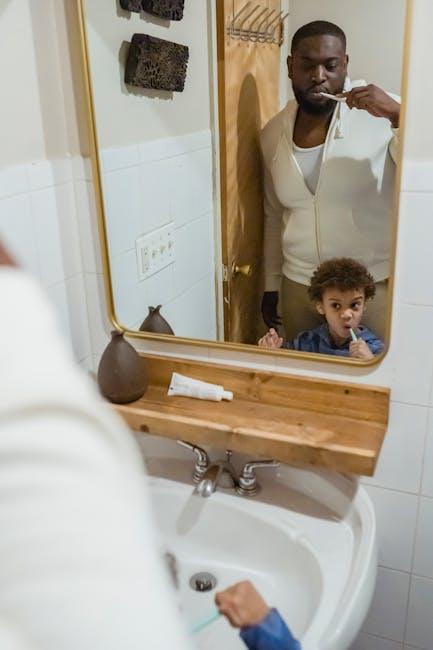Did your toddler break a tooth? Here’s exactly what pediatric dentists say to do next – HOLA
Discovering that your toddler has broken a tooth can be a stressful experience for any parent. Whether it was a tumble, a fall, or an accident during playtime, knowing exactly what to do next can make all the difference in protecting your child’s smile and oral health. In this article, we will walk you through expert guidance from pediatric dentists, practical first-aid tips, treatment options, and ways to prevent future incidents.
Understanding Toddler Tooth Injuries
Tooth injuries are common in toddlers due to their active nature and developing coordination skills. Typically, the “baby teeth,” known as primary teeth, are involved in these accidents. While they will eventually be replaced by permanent teeth, handling a broken tooth properly is crucial to avoid pain, infection, and complications that can affect the underlying permanent teeth.
Types of Tooth Breaks
| Type of Break | Description | Urgency Level |
|---|---|---|
| Chipped Tooth | A small piece of enamel breaks off without exposing the inner dentin. | Low to moderate |
| Cracked Tooth | A visible crack that may not separate the tooth but can cause pain. | Moderate |
| Fractured Tooth | Part of the tooth breaks off exposing dentin or pulp (nerve). | High |
| Knocked-Out Tooth (Avulsion) | The entire tooth is displaced from the socket. | Highest – Dental emergency |
Pediatric Dentists’ Step-by-Step Guidance If Your Toddler Breaks a Tooth
1. Stay Calm and Assess the Situation
The first step is to remain calm. Comfort your toddler and gently inspect the injury in good light. Determine if there is bleeding, swelling, pain, or if the broken tooth piece can be found.
2. Follow Immediate First Aid
- Stop Any Bleeding: Apply gentle pressure with a clean cloth or gauze pad.
- Clean the Area: Rinse your child’s mouth gently with warm water to remove any debris.
- Retrieve Tooth Pieces: If you find any broken tooth fragments, keep them in a clean container with milk or saline solution. Avoid touching the roots if the whole tooth is knocked out.
- Control Pain and Swelling: Use an age-appropriate dose of acetaminophen or ibuprofen, and gently apply a cold compress outside the mouth near the injured area.
3. Call Your Pediatric Dentist Immediately
Do not wait to seek professional advice. Broken teeth often require timely dental attention to prevent infection and ensure proper healing. Pediatric dentists specialize in managing children’s dental trauma and can provide the best care.
4. Provide Details During Your Call:
- How the injury happened
- Type of break or damage (chipped, cracked, completely knocked out)
- Whether bleeding or swelling is present
- Any pain or discomfort your child is showing
What Treatment Options Can You Expect?
Pediatric dentists will recommend treatment based on the severity and type of tooth break. Common options include:
- Smoothing Rough Edges: Minor chips causing discomfort can be gently filed.
- Dental Bonding: Using composite resin to restore the shape and function.
- Stainless Steel Crowns: Often used for larger breaks in baby teeth to protect the tooth until it naturally falls out.
- Root Canal Therapy: For deep fractures that affect the pulp, saving the tooth root.
- Extraction: In cases where the tooth is too damaged to repair, removal may be necessary.
Important Note:
Baby teeth serve as placeholders for permanent teeth, so keeping them intact where possible is important to maintain proper spacing and oral development.
Common Questions Parents Ask Pediatric Dentists
| Question | Expert Answer |
|---|---|
| Will a broken baby tooth heal on its own? | Baby teeth do not heal. Treatment or monitoring is often required to avoid infection or misalignment. |
| Can a broken tooth affect the permanent tooth underneath? | Yes, trauma can impact the developing permanent tooth, so timely dental evaluation is critical. |
| Is it safe to wait and see after a tooth injury? | It’s best to get professional advice immediately; delaying can lead to complications. |
Preventing Future Tooth Injuries: Pro Tips from Pediatric Dentists
- Supervise Active Play: Keep an eye on toddlers during running, climbing, or riding toys.
- Use Safety Gear: Helmets and mouthguards are essential for bike riding and sports.
- Have a Safe Environment: Remove sharp edges or hard objects in toddler play areas.
- Establish a Dental Routine: Regular dental check-ups and good oral hygiene strengthen teeth.
First-Hand Experience: A Parent’s Story
Maria, a mother of a 2-year-old, shares:
“When my son fell and chipped his front tooth, I freaked out. But the pediatric dentist reassured me and guided me through simple first aid steps. Thankfully, the tooth was saved with bonding, and my son was back to smiling in no time. Now, I’m more prepared for anything!”
Conclusion: Act Quickly, Stay Calm, and Rely on Pediatric Experts
When your toddler breaks a tooth, the best thing you can do is promptly provide first aid, keep your child comfortable, and contact a pediatric dentist as soon as possible. Immediate care not only helps minimize pain but also safeguards your child’s future dental health. The baby teeth may be temporary, but their protection is vital for a lifetime of healthy smiles. Follow the expert tips shared here to be prepared and ensure your toddler receives the best care possible after dental trauma.
For more tips on toddler dental care and emergencies, stay tuned to HOLA — your trusted resource for parenting and health advice!


